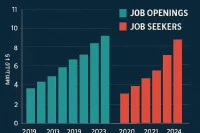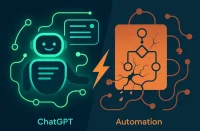As organizations strive to build truly diverse workforces in 2025, neurodiversity—the recognition that neurological differences (such as autism, ADHD, dyslexia, and more) are natural variations of human cognition—has emerged as a vital pillar of inclusion. Neurodivergent employees bring unique strengths: pattern recognition, hyperfocus, creative problem-solving, and out-of-the-box thinking. Yet many hiring processes and workplaces remain poorly adapted to their needs.
This article explores why neurodiversity matters, how employers can redesign recruiting and onboarding, and which inclusive practices lead to higher engagement, retention, and innovation.
Why Neurodiversity Matters
- Tapping Untapped Talent
An estimated 15–20% of the population is neurodivergent, yet underemployment rates among these individuals hover around 30–50%. Proactively recruiting neurodivergent candidates expands the talent pool at a time when skills shortages persist. - Driving Innovation and Quality
Companies like SAP, Microsoft, and JPMorgan have found that neurodivergent teams excel at tasks requiring attention to detail, sustained focus, and pattern analysis—critical in areas such as software testing, data analytics, and cybersecurity. - Fulfilling DEI Commitments
As ESG reporting and social impact become board-level priorities, neuro-inclusive practices demonstrate genuine commitment to equity and can improve reputation among customers, investors, and communities.
Rethinking Job Descriptions & Talent Sourcing
1. Use Inclusive Language
- Avoid jargon and overly broad requirements (e.g., “excellent verbal communication”) that may deter candidates with social-communication differences.
- Focus on core competencies and outcomes (e.g., “analyze large data sets,” “identify process inefficiencies”).
2. Highlight Accommodations Up Front
- State in the posting that accommodations (e.g., extra time on assessments, alternative formats) are available.
- This transparency encourages neurodivergent candidates to apply rather than self-select out.
3. Partner with Advocacy Organizations
- Collaborate with nonprofits like Specialisterne, Neurodiversity in Business, or local disability employment services to source qualified candidates and co-develop pipelines.
- Host joint career fairs or workshops to educate recruiters on neuro-inclusive outreach.
Adapting the Selection Process
Structured, Skill-Based Assessments
- Replace open-ended interviews with practical, work-sample tasks that reflect real job duties (e.g., data entry exercise, code review challenge).
- Use clear written instructions and allow candidates to ask clarifying questions in advance.
Flexible Interview Formats
- Offer choices: virtual or in-person; one-on-one or panel with fewer participants; longer breaks between interview segments.
- Provide questions ahead of time so candidates can prepare, reducing anxiety and maximizing demonstration of competence.
Flexible Interviews, Better Talent
Offer candidates the choice of virtual or in-person interviews, fewer panelists, and advance access to questions — reduce stress and attract top talent.
Try Flexible InterviewingAssessment Accommodations
- Allow extra time on timed tests.
- Permit use of assistive technology (text-to-speech, spell-checkers) where relevant.
- Offer quiet rooms or noise-canceling headphones for in-person interviews.
Onboarding & Early Support
Personalized Onboarding Plans
- Meet with new hires to discuss communication preferences, sensory sensitivities (lighting, noise), and ideal work rhythms.
- Establish a 30-60-90-day roadmap with clear milestones and regular check-ins.
Mentorship and “Buddy” Systems
- Pair neurodivergent employees with trained buddies who can model unwritten norms, clarify expectations, and provide social support.
- Train buddies on neuro-inclusive communication (literal language, concrete feedback).
Sensory-Friendly Workspaces
- Offer flexible seating options: quiet zones, private offices, or noise-managed cubicles.
- Provide lighting controls, screen-filter glasses, and permission to personalize workstations.
Cultivating an Inclusive Culture
Manager Training & Awareness
- Conduct workshops on neurodiversity basics: strengths, accommodations, and communication tips.
- Encourage managers to ask new team members how they learn best and adapt accordingly.
Communication Best Practices
- Use clear, concise written communications—avoid idioms or sarcasm that may confuse literal thinkers.
- Reinforce key messages with bullet points and recap in writing after meetings.
Performance Feedback
- Provide direct, objective feedback tied to observable behaviors and outcomes.
- Schedule dedicated feedback sessions rather than ad-hoc comments, allowing time for processing.
Measurement & Continuous Improvement
Track Inclusion Metrics
- Monitor application, hiring, and retention rates for neurodivergent employees.
- Survey new hires on onboarding satisfaction and sense of belonging.
Solicit Ongoing Feedback
- Establish anonymous suggestion channels and regular listening sessions for neuro-inclusive improvements.
- Act on insights—whether adding more quiet rooms, refining interview guides, or updating training.
Celebrate Success Stories
- Share case studies of neurodivergent team members driving project wins.
- Recognize managers and peers who demonstrate exemplary inclusive leadership.
Case Study: TechNova’s Neuro-Inclusive Transformation
Background: TechNova, a 2,000-employee software firm, launched a neurodiversity hiring pilot in early 2024 after noticing high attrition in quality-assurance roles.
Key Actions:
- Revised job postings to emphasize skill tasks over social requirements.
- Partnered with Specialisterne to screen and prepare cohorts of QA testers.
- Trained 50 managers in neuro-inclusive leadership and opened a dedicated “sensory room.”
Outcomes (12 months):
- 30% increase in application volume for QA roles, with 85% retention of neuro-divergent hires.
- 25% reduction in software defects, attributed to the pattern-recognition strengths of new testers.
- Employee-Net-Promoter-Score (eNPS) rose by 12 points among teams with neurodivergent members.
FAQs
Q: How do I ask about neurodiversity without intruding?
Frame it as part of a broader accommodation discussion:
“We strive to support all learning and working styles. Are there any adjustments—like extra time on tasks or a quieter workspace—that would help you thrive?”
Q: Are accommodations costly?
A: Many adjustments are low-cost (written instructions, flexible scheduling, noise-canceling headphones). Only a small percentage require significant investment.
Q: How can I become an autism-confident employer?
A: Pursue certifications like the National Autistic Society’s “Autism Confident” program, partner with advocacy groups, and embed neuro-inclusion into your DEI strategy.
Q: What legal considerations exist?
A: In the U.S., the ADA requires reasonable accommodations. Similar laws apply globally (e.g., UK’s Equality Act, Canada’s AODA). Always work with your legal and HR partners to ensure compliance.
Final Thoughts
Neurodiversity hiring and inclusion strategies are not niche HR initiatives—they are strategic imperatives that unlock untapped talent, drive innovation, and enhance organizational resilience. By redesigning recruitment, rethinking assessments, and cultivating supportive cultures, companies can harness the distinctive strengths of neurodivergent employees while demonstrating authentic commitment to equity.
In 2025’s competitive talent landscape, neuro-inclusive employers will stand out—not just as socially responsible, but as innovators powered by diverse minds. It’s time to move beyond accommodation and toward celebration of all neurotypes




